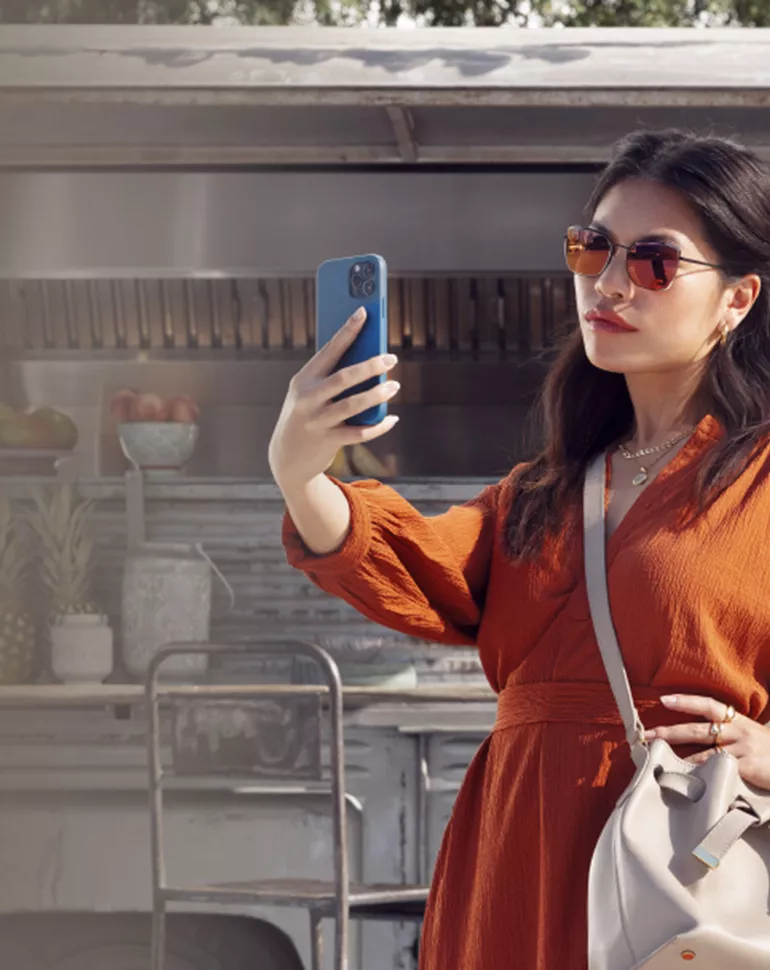Which Sensity® lenses are right for you?
Take a quiz and check which Sensity® lenses are right for you!

Light reactive lenses are more than just sun protection built into a standard pair of glasses. They are highly innovative auto-adjusting lenses that provide built-in convenience to simplify the patient's life. Light reactive lenses also help attenuate UV light and harmful indoor and outdoor blue light.
More than 90% of photochromic lens wearers plan to continue to purchase them. This high repurchase rate makes it clear that patients find value in light reactive lenses.
In 2020, the photochromic lens market size was valued at $5.57 billion. Looking ahead at 2028, it’s projected to reach $9.89 billion, growing at a rate of 7.36% over the next 7 years.
What are photochromic lenses, and how do they work?
Photochromic lenses, describe optical lenses that darken automatically once exposed to high-frequency lights like UV radiation. The first photochromic technology was offered for glass lenses in 1966 by Corning. While this technology was a significant industry disruption, inconsistencies began to show from one lens to the next based on lens thickness and prescription.
Over the last several decades, photochromic lenses have come a long way. Lens materials and manufacturing have significantly improved the light-reactive technology and lens quality.
Today, a photochromic lens consists of carbon-based photochromic dyes. The molecules in the dye activate when there is a surrounding change in UV light such as by moving from indoors to outdoors. The molecules then respond by forming bonds that darken the lens to protect us from light rays. When the high-frequency light is absent, the lenses return to its clear state!
Darkening happens within a matter of seconds, but the chemical change happens more slowly for the lens to change back to its clear form. Temperature also plays a role in affecting the speed of darkening and becoming clear again. However, photochromic lenses lose most of their tint density within the first 60 seconds of being inside, and HOYA continues to innovate fade back speeds of light reactivel lenses.
With Sensity® 2 lenses, you give patients the benefits of full vision correction and sun protection in a single pair of glasses.
Patient Benefits:
Sensity® Fast is our fastest light adaptive lens, rapidly fading back from dark to clear. Perfect for new photochromic wearers who are worried about the fade back time.
Patient benefits:
The molecules responsible for tint density within the lens are influenced by their environment, including UV light and temperature.
In colder temperatures, molecules vibrate more closely together, increasing the speed it takes for the lens to darken quickly. In warmer temperatures, the molecules are less kinetically active, and the process of fully darkening can be slower.
While it may be true that photochromic lenses can take longer to darken in cold weather, HOYA's Stabilight Technology® provides consistent performance and UV protection in a variety of climate and light conditions.
Windshields of cars are designed to reduce or block UV rays, while regular photochromic lenses may not darken in the car because of insufficient exposure, Sensity® Dark lenses react quickly to visible light. The reaction to visible light causes the lenses to be specifically designed to darken significantly from the light that comes through windshields, giving you a more enjoyable driving experience.
Sensity® Dark lenses are engineered for outdoor activities and driving - ideal for an active lifestyle.
Patient benefits:
The versatility of light reactive lenses goes from type to color, making sure your patients can always find something that suits their style. The diverse styles are designed to fit the prescription needs of most people. Your patients want a light reactive lens option that appeals to their sense of fashion. HOYA's light reactive lenses provide wearers with a flash mirror effect for a more fashion-forward look.
Sensity® Shine combines comfort, convenience, and fashion with a mirror coating on a photochromic lens that can fit into any frame.
Patient benefits:
Your patients need light reactive lens options that perform well in all temperature and UV conditions, with opportunities to meet multiple lifestyle needs.
The Sensity® family of light reactive lenses provide a range of solutions for visual comfort and UV protection that is right for every patient.
Stand out with quality and comfort
As you discuss light reactive lenses with your patients, you will likely learn three things:
Use these opportunities to offer a solution to all of the above. With HOYA's new Sensity® 2 light reactive lenses, you can expect a fadeback 47% faster than the original Sensity® lenses.
*Sensity® Fast does not contain Stabilight Technology®
**Based on internal and external photochromic activation and deactivation measurements taken at different temperature levels.
***Based on internal testing of average light transmission between 381nm-500nm compared to a standard clear lens.

Take a quiz and check which Sensity® lenses are right for you!